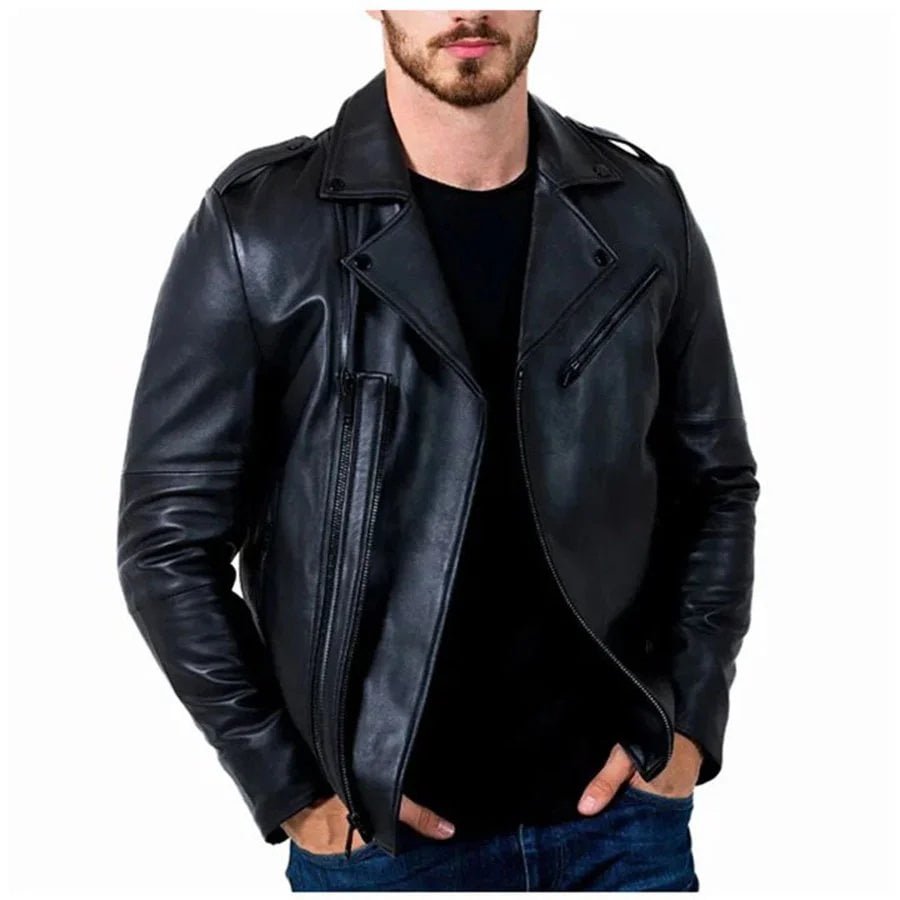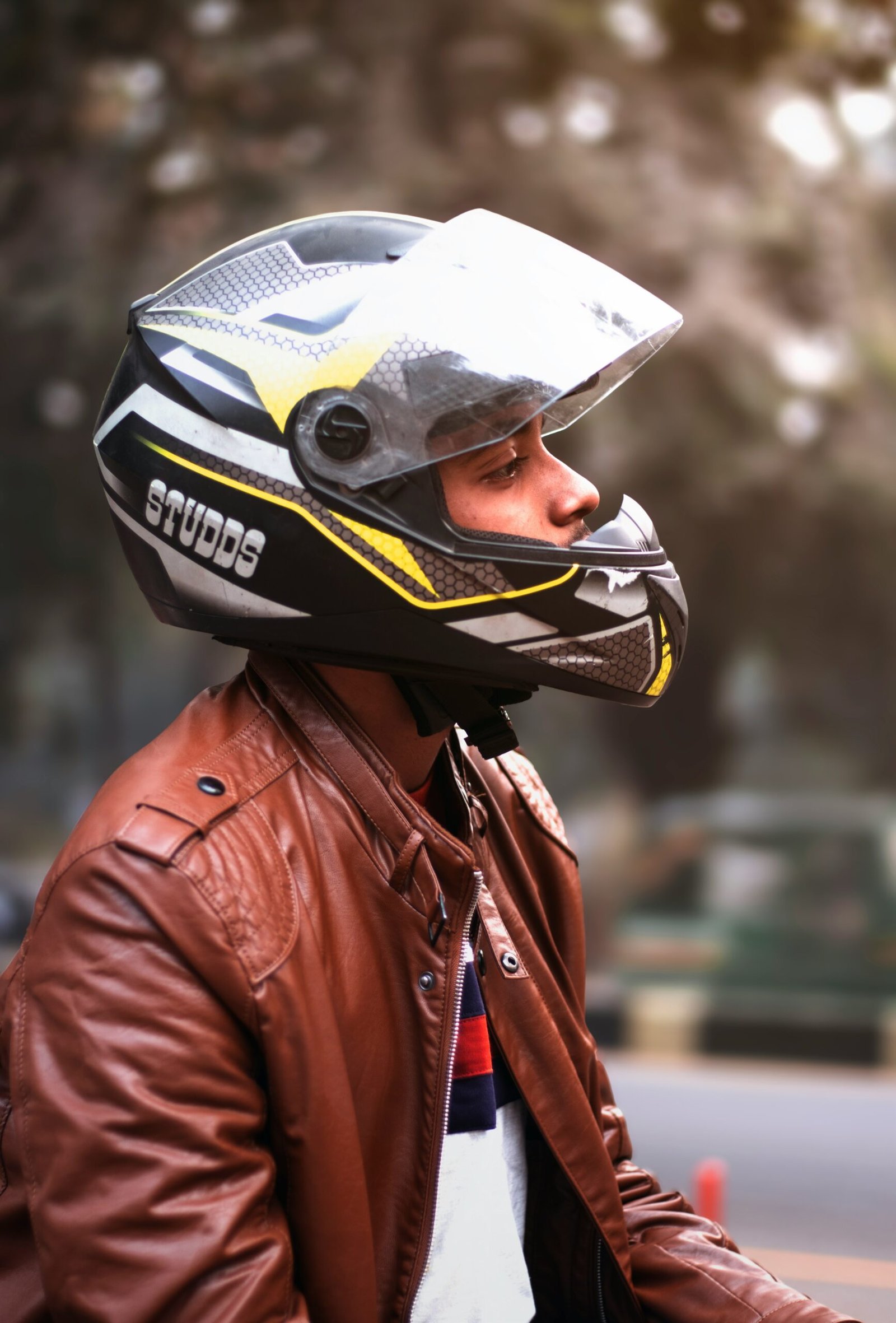How Should a Biker Leather Jacket Fit ?
Understanding the Importance of Fit in Biker Leather Jackets
The significance of the fit of a biker leather jacket extends beyond mere aesthetics. While it’s undeniable that a well-fitted jacket plays a pivotal role in crafting a sleek, fashionable appearance, the importance of fit is manifold, interweaving aspects of comfort, safety, and functionality. A biker leather jacket is not just a piece of clothing; it is an essential component of your riding gear, meticulously designed to enhance protection and elevate your riding experience.
One critical facet of a biker leather jacket is its ability to position armor plates correctly. When a jacket fits properly, these protective elements remain in designated areas—such as shoulders, elbows, and back—thereby maximizing their efficacy during an impact. A loose or overly tight jacket can displace these plates, significantly diminishing their protective capacity. Consequently, a meticulously fitted biker jacket can substantially mitigate injuries in the unfortunate event of an accident.
Comfort is another paramount consideration. The rigors of motorcycling necessitate prolonged periods of wear, making comfort non-negotiable. A jacket that fits well will conform snugly to your body, allowing for ease of movement without excess material bunching up or causing discomfort. Over long rides, an ill-fitting jacket can lead to chafing, restricted movement, and overall riding fatigue. Therefore, proper fit ensures practical ease, enabling you to focus on the ride without constant physical distractions.
Beyond safety and comfort, the aesthetic value of a well-fitted biker leather jacket cannot be overstated. When tailored to fit your physique, the jacket accentuates your silhouette, creating a streamlined, rugged look synonymous with biker culture. Conversely, a jacket that is too large or too small can detract from your overall appearance, rendering an otherwise strong statement piece ineffective. Thus, striking the right balance between form and function is essential.
In conclusion, understanding the importance of fit encompasses evaluating how a biker leather jacket performs across dimensions of safety, comfort, and style. A well-fitted jacket is a seamless blend of protection and panache, ensuring that you ride not only in safety but also in impeccable style.

Key Areas to Focus On: Shoulders, Chest, and Arms
Finding the perfect fit for a biker leather jacket is essential for both comfort and functionality. The key areas to focus on include the shoulders, chest, and arms. Each of these sections significantly influences how well your jacket serves you while riding or adding a stylish edge to your look.
Starting with the shoulders, the jacket should sit perfectly along the natural lines of your shoulders. If the seams extend beyond your shoulders, the jacket is too large and may impede your riding mechanics. Conversely, if they fall short, the jacket is too tight and will restrict your arm movement, especially when gripping the handlebars. The shoulders need to have just the right width to offer maximum comfort and freedom.
Next, the chest area requires a snug but comfortable fit. The jacket should conform to your chest without being excessively tight. A well-fitted chest area ensures that the jacket stays in place and doesn’t ride up while allowing space for additional layers of clothing if needed. You should be able to zip up the jacket without feeling restricted, ensuring optimal airflow and ease of movement.
When it comes to the arms, the sleeves should allow for a full range of motion. The fit around the arms should not be too tight to restrict blood flow or too loose to flap in the wind, ensuring a secure yet comfortable experience. Additionally, consider the length of the sleeves; they should extend to your wrists, covering the arms completely when your hands are on the handlebars. Moreover, flexible cuffs or zipper adjustments can make a big difference in customizing the perfect fit.
Lastly, it’s crucial to pay attention to the overall length of the jacket. The back should be long enough to cover your lower back when you are seated on your motorcycle, providing protection from the elements and maintaining a sleek silhouette. A well-fitted jacket will enhance both your riding experience and appearance, making every journey enjoyable and stylish.
Material Matters: How Different Types of Leather Affect Fit
When selecting a biker leather jacket, understanding the differences between leather types is fundamental to finding the perfect fit. Leather, being a natural material, varies considerably in its properties, influencing how a biker jacket conforms to the body over time.
Top-grain leather is one of the most popular choices for biker jackets. It is created from the top layer of the hide, giving it a smooth, but slightly processed finish. Top-grain leather offers a moderate amount of breathability and pliability, allowing it to mold to the wearer’s body with continued use. Its durability ensures that while it stretches slightly to fit better, it maintains its shape well without excessive deformation.
Full-grain leather is another premium type of leather, known for its strength and breathability. It is less processed than top-grain leather, retaining its natural markings and imperfections. Full-grain leather is thicker and stiffer initially but becomes incredibly supple and comfortable as it breaks in. This leather stretches and conforms closely to the body, offering a custom fit over time. However, this stretch ability comes with a caveat: proper care and maintenance are crucial to avoid over-stretching and cracking, which can compromise the jacket’s fit and longevity.
Genuine leather, a term often misunderstood, generally refers to leather made from the lower layers of the hide. It is more affordable but lacks the durability and breathability of top and full-grain leathers. Genuine leather can still provide a good fit, but it is prone to wearing out faster and may not conform to the body as well as higher-quality leathers. The stretch is minimal, often leading to a more rigid fit that may not adjust as easily over time.
To maintain the best fit for any biker leather jacket, regular care practices are essential. Conditioning and cleaning treatments help preserve the leather, keeping it supple without becoming overly stretched or cracked. This maintenance ensures that the jacket retains its shape and durability, offering long-term comfort and style.
Tips for Trying On and Adjusting Your Biker Leather Jacket
Ensuring your biker leather jacket fits correctly is crucial for both comfort and safety. When trying on a jacket, it’s important to wear the type of clothing you normally would while riding. This helps you get an accurate sense of how the jacket will feel during your rides. Begin by putting on the jacket and checking it while standing, then adopt your usual riding position to see how it behaves.
Here are some detailed tips for checking the fit of your biker leather jacket:
Wear Typical Riding Clothes: If you ride with a thermal layer underneath or a specific type of shirt, wear that when trying on the jacket. This ensures the fit will be true to your riding experience.
Check in Riding Position: Move into different positions you typically adopt while riding. For instance, sitting on a chair can simulate a riding posture. Ensure the back of the jacket covers your lower back and that there is enough room for movement in your shoulders and arms.
Adjust Straps and Fasteners: Many biker leather jackets come with adjustable straps and fasteners. Tighten or loosen these as needed to achieve a snug but comfortable fit. Pay attention to areas like the wrists and waist, which should be secure but not constricting.
Consider Professional Alterations: If the jacket is close to fitting perfectly but needs slight adjustments, consider taking it to a professional tailor who specializes in leather. A precise fit can make a significant difference in both comfort and aesthetics.
Mobility and Comfort: Ensure that the jacket allows for full range of motion. Raise your arms, bend your elbows, and twist your upper body to check for any restrictions. The jacket should not pinch or feel overly tight in any area.
Protective Features Placement: Verify that all protective features, such as padding or armor, are correctly positioned. These should sit on the shoulders, elbows, and back without shifting out of place.
Using this checklist can greatly improve your overall riding experience. A well-fitted biker leather jacket offers protection, enhances mobility, and provides comfort during your rides.




